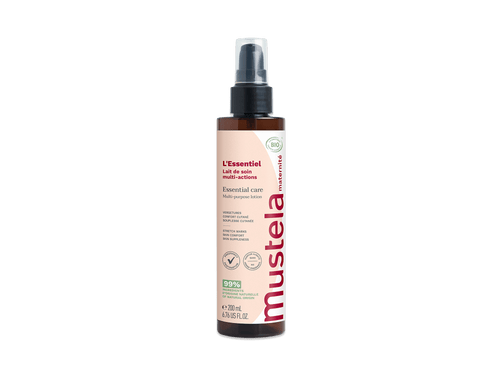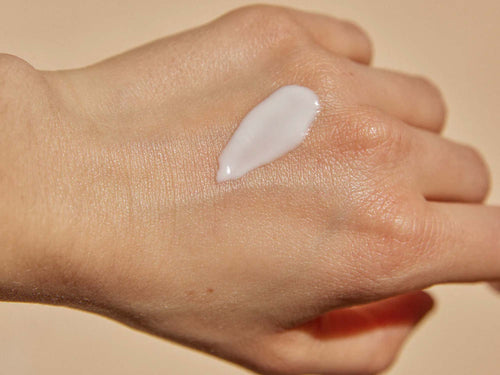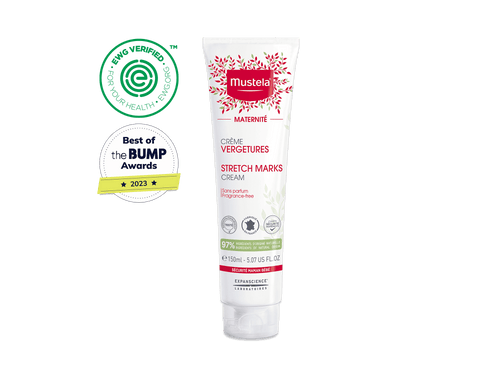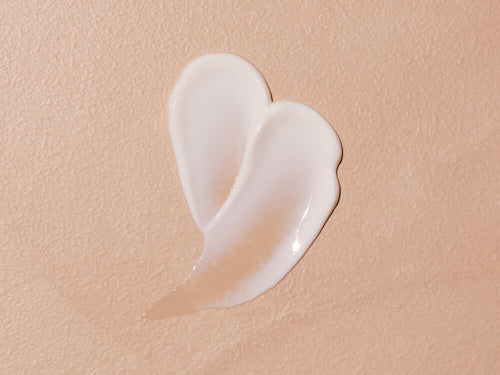Even if you’re just a few days (or hours!) into motherhood, you’ve probably already realized that it comes with its fair share of highs and lows. Breastfeeding is one of those simultaneously wonderful and challenging parts of being a mom.
A good breastfeeding latch — how your baby’s mouth attaches to your nipple — is crucial to healthy, pain-free breastfeeding, but many mothers and babies struggle to get the hang of it.
If that’s you and your little one, don’t be discouraged! Mustela has the tips you need to help your baby latch and nurse well.
Why Breastfeeding Latch Is Important

When it comes to breastfeeding, the latch is everything! So, what happens if your baby doesn’t latch on correctly? Let’s take a look at some of the problems that can come from an incorrect breastfeeding latch.
Your Baby Doesn’t Get Enough Milk
When your baby doesn’t latch onto your nipple properly, they probably aren’t able to extract your milk well. That means they might not drink enough at each feeding. If this continues, your baby may start to lose weight.
Your Milk Supply Decreases
Your breasts function on a supply-and-demand basis. The more breastmilk is used the more your body will produce.
So, a bad latch can create something of a vicious cycle: your baby doesn’t latch on well, they might not remove much milk while nursing, and, as a result, your milk supply decreases.
You Are In Pain
Breastfeeding might be uncomfortable for you at first, but it shouldn’t be painful.
Pain will be one of the first signs that your baby isn’t latching on correctly. You might notice pain while you’re nursing or develop sore or cracked nipples. Ouch!
If breastfeeding is going well, your little one is gaining weight and wetting diapers, and you aren’t in pain, then carry on! No need to change your breastfeeding habits.
But if that’s not the case, your baby’s latch could be the culprit. The good news is that you and your little one can learn how to achieve a comfortable, effective breastfeeding latch!
But before we get to that, let’s talk about caring for your breasts. If you’re already suffering from sore or cracked nipples, don’t wait until you correct the latch to take care of them! Start applying a nipple cream, like Mustela’s Nursing Comfort Balm, right away.
Our lanolin-free balm protects your nipples, eases discomfort, and helps to replenish and restore your skin during and after breastfeeding.
Now, on to our tips for correcting your little one’s breastfeeding latch!
13 Tips For A Good Breastfeeding Latch

1) Don’t Wait Until Your Baby Is Too Hungry
Everyone gets a little cranky when they’re really hungry! Your baby is no different, and if they get very hungry, it might be harder to help them latch on correctly.
Instead of waiting until they’re crying, nurse your little one when they show early signs of hunger. You might notice your baby start to get fussy, smack their little lips, root (turn their head side-to-side), or suck their fingers.
Those are your cues that it’s time to breastfeed!
2) Find The Right Position
A good position will help your baby latch on well. But just like it takes two to tango, breastfeeding is a sort of dance between mom and baby.
Since every mother-baby pair is different, there’s no one right breastfeeding position. It’s worth trying a few different ones to see what works best for you and your little one!
Read up on seven common breastfeeding positions here.
3) Offer Your Baby A Soft Breast
Make it easy for your baby to latch on properly by offering them a soft breast instead of a firm, engorged breast.
If your breasts are especially full, express a bit of milk before nursing or try something called “reverse pressure softening.”
This method consists of using your fingers to apply gentle pressure to the area around your nipple, moving fluid back, away from your nipple. To soften your breast, do this for one minute before you start breastfeeding.
4) Make Sure Your Baby’s Body Is Aligned
When you get set up to breastfeed, make sure your baby’s body is not twisted. Their ears, shoulders, and hips should be in a straight line.
5) Start “Nose-To-Nipple”
As you get ready to give your baby your breast, start with their nose facing your nipple. This puts your baby’s head in the right position for a good latch.
6) Don’t Hold Your Baby’s Head Too Tightly

When your baby opens their mouth to latch on, they’ll need to tip their head back a bit. Give them some space to do so by not holding their head too tightly.
Instead, try holding their shoulders to support them and bring them close to your body.
7) Wait Until Your Baby Opens Wide
Don’t shove your nipple into your baby’s mouth! Be patient and wait for them to open their tiny mouth big and wide.
Help them out by touching their upper lip with your nipple a couple of times. When their mouth is open wide, their head will tilt slightly back and you can bring them to your breast.
Your little one’s chin should touch your breast first, then their mouth.
8) Aim Up, Not Straight Back
When you bring your baby’s wide-open mouth to your breast, think about aiming your nipple up toward the top of their mouth or their upper lip rather than straight back into their mouth.
9) Bring Your Baby To You
Don’t hunch over and maneuver yourself when you offer your breast to your baby. Bring them to you; don’t go to them!
Doing this allows you to help them get in the right position. Even better, you won’t end up with a sore back and neck.
10) Check For Signs Of A Good Breastfeeding Latch

Once your baby is latched on and settled in, check for these signs of a good latch:
- Their cheeks are full and rounded
- You see or hear them swallowing, but don’t hear smacking and clicking
- Their chin touches your breast
- You are not in pain
- You see more of your areola (the darker skin around the nipple) above your baby’s mouth than below it
- Their bottom lip is turned out, not tucked in
- Nursing begins with quick sucking then slows to longer, more rhythmic sucks
- Your nipple is a normal shape and color when your baby comes off
11) Start Over If Needed
If things don’t look or feel right once your baby has latched on, don’t hesitate to try again.
Slip one of your fingers (make sure your hands are clean!) into the corner of your baby’s mouth to break the suction and take them off. Then have another go!
12) Take Care Of Yourself
Breastfeeding can take a toll on your body in more ways than one! In the midst of struggling to get a good breastfeeding latch, don’t forget to give yourself lots of grace and TLC.
Care for sore nipples by applying Nursing Comfort Balm after feeding your little one. Enriched with vitamin E to nourish and protect your skin, our vegan, fragrance-free, and dye-free formula has a neutral smell and taste and won't stain your clothing.
Also, pamper your delicate bust area with Mustela’s hydrating Bust Firming Serum. Apply this hydrating serum twice daily to tone your skin and give it a firmer look and feel!
13) Talk To Your Doctor Or A Lactation Consultant
Even if you follow our tips to a T, nothing replaces a doctor or lactation consultant who can meet with you and your baby in person.
They will be able to evaluate your breastfeeding latch, give pointers on good positioning, and check to see if your baby has tongue-tie.
Tongue-tie is when the tissue connecting the underside of your baby’s tongue to the floor of their mouth is unusually short. Some babies with tongue-tie can nurse without problems, but tongue-tie could be the cause of your baby’s difficulty latching on.
Be Patient

If you and your little one are struggling with breastfeeding, don’t get discouraged! With time, patience, our 13 breastfeeding latch tips, and support from your doctor or lactation consultant, breastfeeding troubles can soon be a thing of the past.
In the meantime, care for your breasts and nipples with Bust Firming Serum and Nursing Comfort Balm, and shower your little one with extra love and kisses. Breastfeeding can be a challenge, but you can do it!












